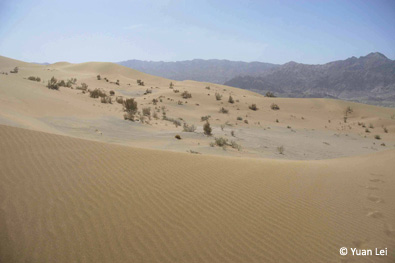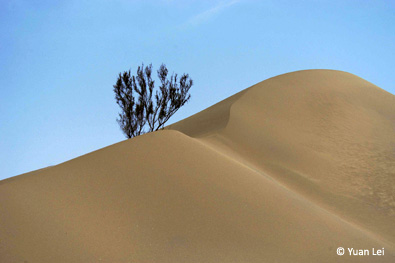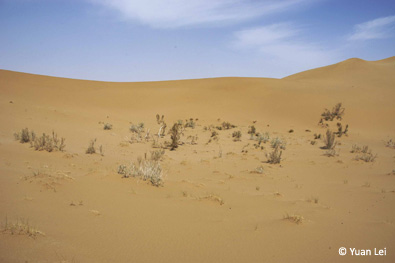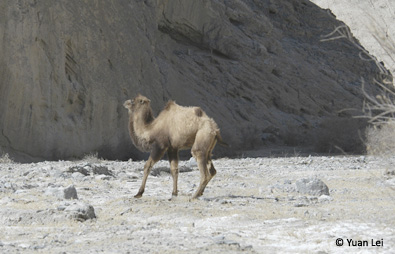Yuan Lei is an EDGE Fellow working on one of the few remaining wild Bactrian camel (Camelus bactrianus) populations in China. In May he organized a survey expedition which aimed to identify which habitats are most important for wild camels.
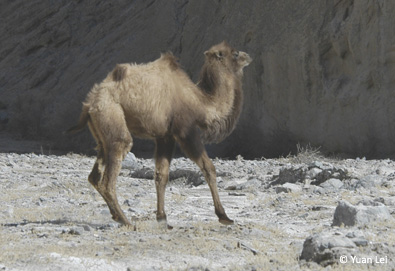
The team spent 14 days in the desert in north-eastern China, and covered areas including the Jiashun Gobi, Aqike Valley, Kumutage Desert, and Aerjinshan Mountain.
Jiashun Gobi – in this are no wild camels were observed. The region does not have good vegetation availability and it is difficult to find water, so is likely to support only a very small population of camels.
Aqike Valley – Two wild camels were observed in the Aqike Valley, a decrease on last year’s survey which observed a large group of 16 camels. However, vegetation availability in this area is good, water more readily available, and there is little human activity.
Kumutage Desert – A large number of wild camel dung was observed along the north of this desert, some of which were fresh showing recent occupation by camels. This desert is located north of the Aerjinshan Mountain, and is an important migration route for wild camels. The Kumutage Desert covers a large area and offers sufficient vegetation to be an important resource for migrating camels. Vegetation most often grows low and in the sand dunes, between two dunes or on the leeward (downwind) side of a dune. This means that the site is not only a good place for camels to eat, but that they can also rest from the wind between the dunes while they eat.
North of Aerjinshan Mountain – Here the team observed 50 wild camels. The area was full of good vegetation for camels, and there are many water springs; numerous camel footprints were observed around the Kumusu spring. Luckily no recent human activity was observed, which can often reduce the quality of habitat for camels.
In total 52 camels were observed on this survey – over 5% of the estimated global population. The majority of camel sightings were at the Aerjinshan Mountain, while signs of recent camel presence were observed in the Kumutage Desert, causing the team to conclude that these two sites are the most important wild camel habitats surveyed.
The majority of other animals observed during the expedition were also seen in the Aerjinshan Mountain, including ten each of gazelle, argali and blue sheep, and one fox.
If you would like to support conservation work for unique and overlooked species, such as the wild Bactrian camel, then please become an EDGE Champion, or donate here.
